Patrick Kaluzny’s 1960 Ford Fairlane 500 Town Sedan might be a four-door sedan, but there’s nothing mundane about it. While most people walk past four-door sedans at car shows, Patrick Kaluzny’s Fairlane draws a crowd wherever it goes. The 1960 Ford’s attraction may come from its lovely green-and-white two-tone paint. It might even be what Ford described as the “continental flair” to its long and lithe styling. But more than likely, it’s the fact that someone restored a mid-level 1960 Ford four-door sedan, and did so to a show-stopping, gem-like Old Cars Price Guide Number 1 condition.
While it might be hard to believe that people are so drawn to a four-door sedan, we’ve witnessed it. The ’60 was invited to the Ford Product Development Center (PDC) Truck and Car Show, an event organized by Ford Motor Co. employees in which vehicles must be invited to attend, and then receive final approval after the invitation. Even amongst the other top-notch invitees to the 2022 event, we watched crowds gather around Kaluzny’s 1960 Fairlane 500 sedan. (Editor’s note: We’ve also been among a crowd to surround this car as it was unloaded from a trailer at a past Iola Car Show.)
Indeed, the 1960 Ford looks brand new, maybe even better than the condition of the new 1960 Ford Fairlane sedan that Kaluzny’s father drove off a Ford dealer’s lot in 1960.
“Back in 1960, my father, Tony Kaluzny, bought a new 1960 Ford Fairlane 500 four-door sedan,” recalled Kaluzny. “It was black with a white top, and the interior was black with gray inserts. It had a 292-cid V-8 engine and three-speed manual transmission on the steering column."
“I have fond memories of my brother, Tony, Jr., and I riding in the back seat on our way to a barber shop in Old Detroit for our monthly haircuts,” Kaluzny continued. “We would marvel at the shape of the quarter panels and their fins. In our young minds, it looked like an airplane with its sleek-look, shiny chrome hubcaps and grille. The body, with its moldings, was different than anything we’d seen before. And the wide stance made it look massive."
“My brother and I were in elementary school when our father brought it home from the local Ford dealership. It’s one of those impactful memories from my childhood that I’ll never forget. That black 1960 Ford Fairlane 500 changed my life and the way I looked at cars. On that day in 1960, more than 62 years ago, my interest in automobiles had been fueled.”
Kaluzny was too young to ever experience a drive behind the wheel of his father’s 1960 Ford before it was sold. His father kept the Ford for just six years before trading it in, but Kaluzny never forgot it.
“Unfortunately, in 1966, my father traded in the 1960 Ford Fairlane 500 for a new 1966 Mercury Parklane,” he said. “It had the unique Breezeway rear window, but lacked overall appeal. The [Mercury] didn’t have the same level of visual impact as the Fairlane 500. When my father showed up with the new Mercury, I was disappointed and immediately missed the Ford."
“As an adult, I started attending car shows, hoping to come across a 1960 Ford Fairlane 500 four-door sedan like the one we owned,” Kaluzny said.
Discovering a Ford like Dad’s
Kaluzny is a retired Ford Motor Co. employee, having worked as a controls systems department supervisor at the Research Innovation Center in Dearborn, Mich. He regularly attends events held on the grounds of his former employer, including the Ford PDC Truck and Car Show. The car show is held just minutes from the Research Innovation Center where he previously worked. However, it was at a different event, one at Ford World Headquarters, where he first saw his 1960 Ford Fairlane 500. Kaluzny remembers the day well — it was Sunday, June 12, 2014.
That day, Kaluzny was showing his 2011 Mustang GT/CS convertible at the annual Shelby American Automobile Club (SAAC) Motor City Region car show. Upon settling into his car’s display space, Kaluzny kept noticing a crowd gathering around an automobile in the distance. After seeing this continue for a while, curiosity got the best of him. He wondered, “Had Ford Performance or Shelby American brought something new to the car show?” He made his way over to the crowd and couldn’t believe what stood before him.
Kenneth Robert Malofey was proudly displaying a 1960 Ford Fairlane 500 four-door sedan painted light green with a white roof, and it was simply amazing. Like everyone else who laid eyes on it that day, Kaluzny couldn’t believe the phenomenal fit and finish of the Ford. The engine compartment was impeccable, and upon looking at what appeared to be an original, like-new interior, childhood memories came flooding back. Eventually, Kaluzny introduced himself to Malofey, who mentioned he’d recently purchased the 1960 Ford Fairlane 500 four-door, and this was its first car show since he acquired it.
Malofey said the previous owner, Paul Garlick, of Vulcan, Mich., found the rust-free Fairlane 500 in Iowa. He completed the concours-quality restoration in 2012. During the restoration, each nut, bolt, screw, panel or component was reconditioned or replaced with genuine FoMoCo parts.
Malofey went on to say the paint color is Adriatic Green on the lower body and Corinthian White on the roof. The interior is green Modern Stripe nylon cloth with Morocco grain vinyl bolsters, and except for the driver-side front insert surface, the interior is original. The engine is Ford’s 223-cid six-cylinder, and it’s backed by a three-speed manual transmission with overdrive and a 3.89:1 rear axle. The original factory glass was retained and reused during the restoration.
Kaluzny and Malofey exchanged phone numbers with the understanding that, if the car was ever for sale, Malofey would contact Kaluzny and give him the opportunity to buy it.
The purchase of a lifetime
On Sept. 19, 2017, Kaluzny purchased the 1960 Ford Fairlane 500 four-door sedan after coming across a Craigslist ad offering it for sale. He contacted the owner and bought the car. When he drove it home for the first time, reality sunk in. He had fulfilled a childhood dream to own a 1960 Ford like the one his father purchased new nearly 57 years ago.
“I was over the top with excitement,” Kaluzny said. “[Being] in the driver’s seat, at the controls, for the first time was a once-in-a-lifetime thrill."
“As I made my way home, people pulled up next to the car and gave me a thumbs up,” he said. “It seemed everyone wanted to get up close for a closer look. They had smiles on their faces and nodded their heads in approval. It was a day I’ll never forget.”
Kaluzny continues to drive the Ford to car shows throughout the Detroit area, so it’s no trailer queen. However, he meticulously cares for it in order to keep it in tip-top condition. Just like the first time he saw it back in 2014, other enthusiasts remain amazed by its size, pristine condition, laser-straight body and exceptional fit and finish. When spectators peek into the engine bay, they’re surprised and then fascinated by the six-cylinder engine and its vertically mounted carburetor and air cleaner, which neatly rest in the huge opening that is usually occupied by one of Ford’s big V-8s. With Kaluzny’s exceptional care, the Ford is sure to keep amazing people for many years to come.
Photo Gallery
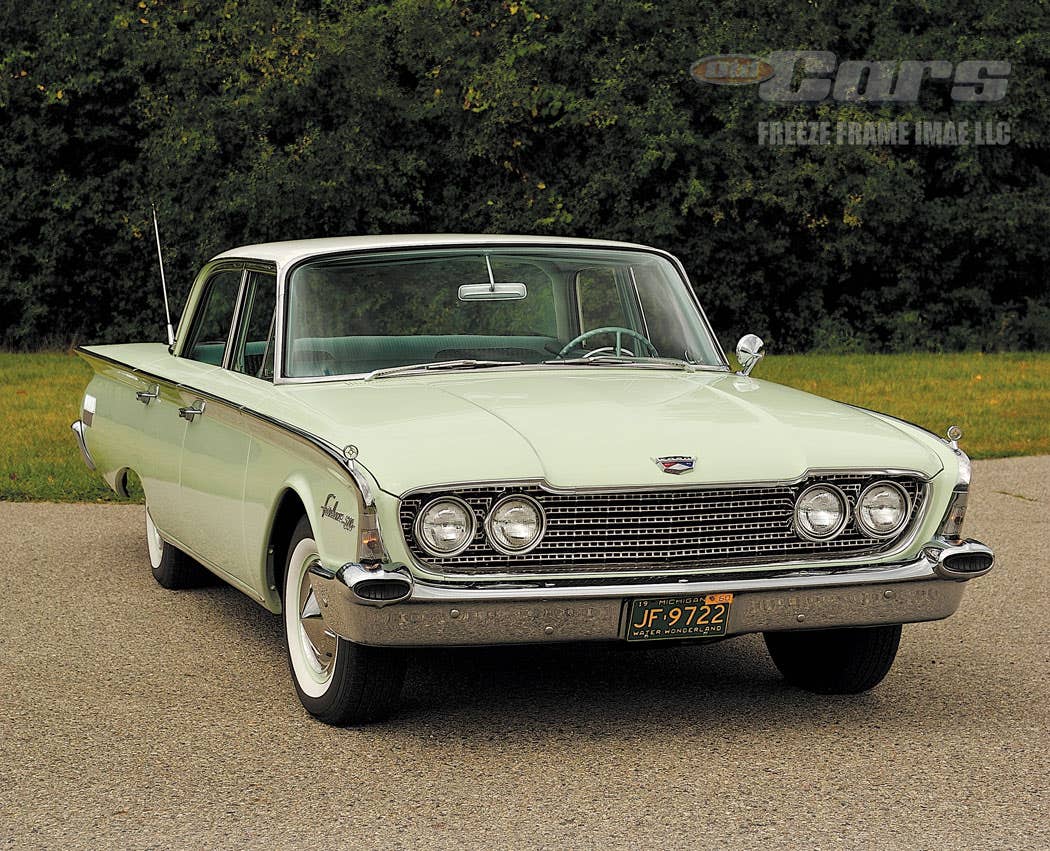
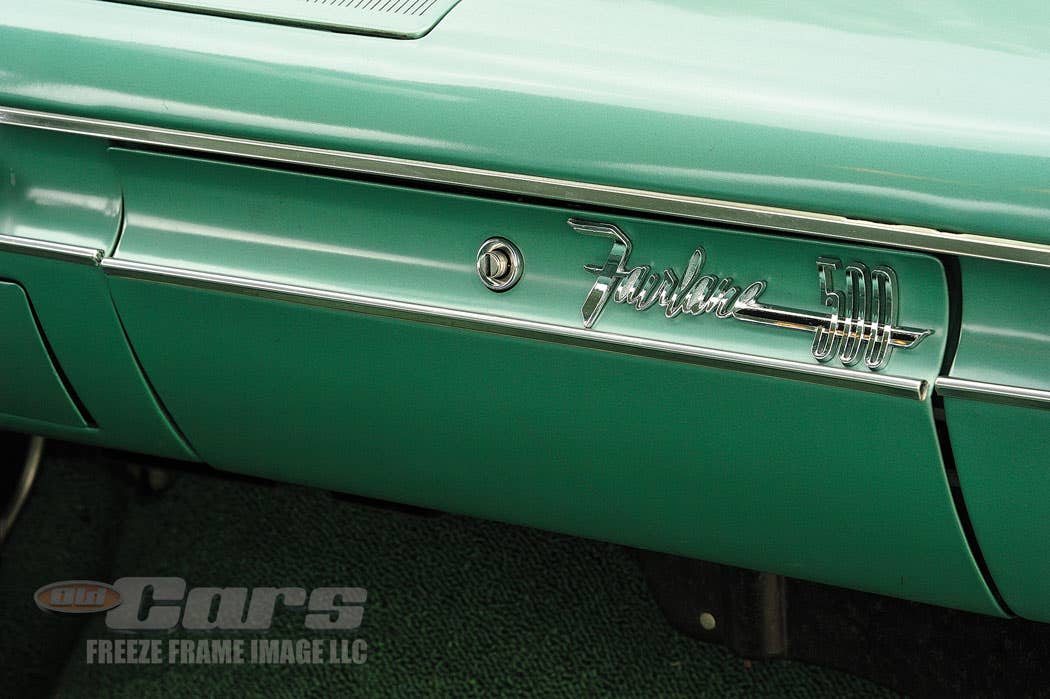
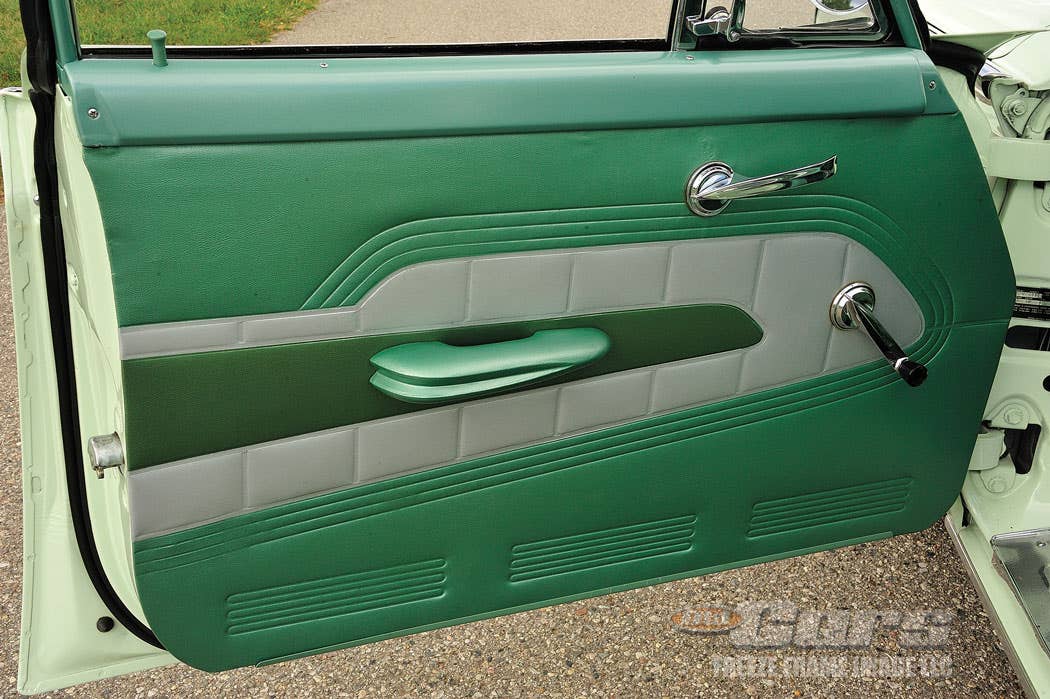
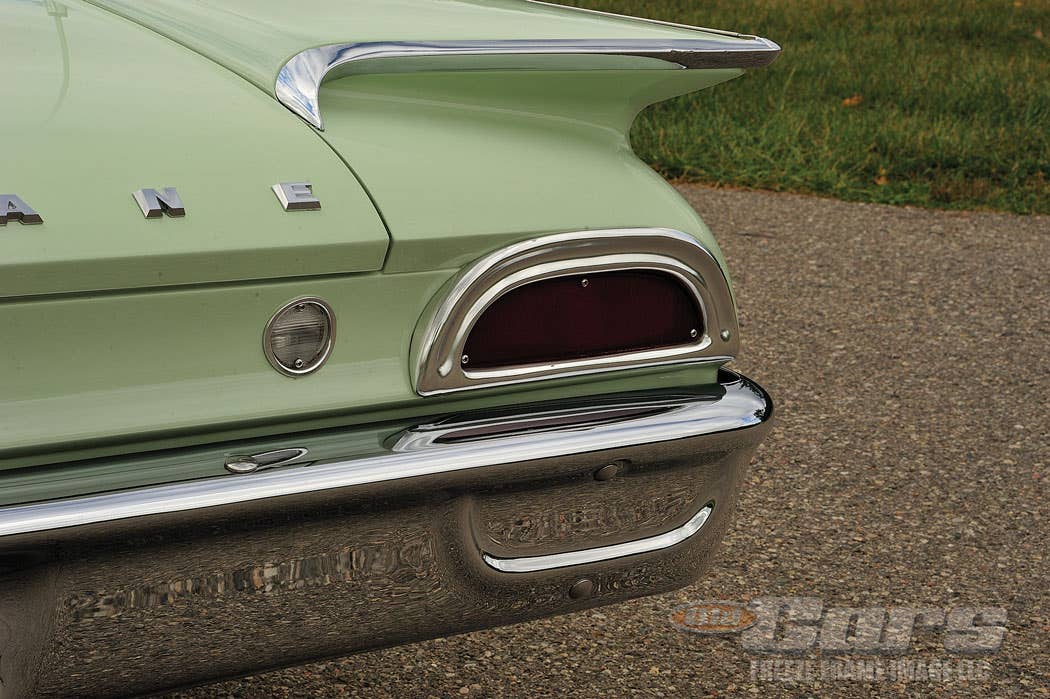
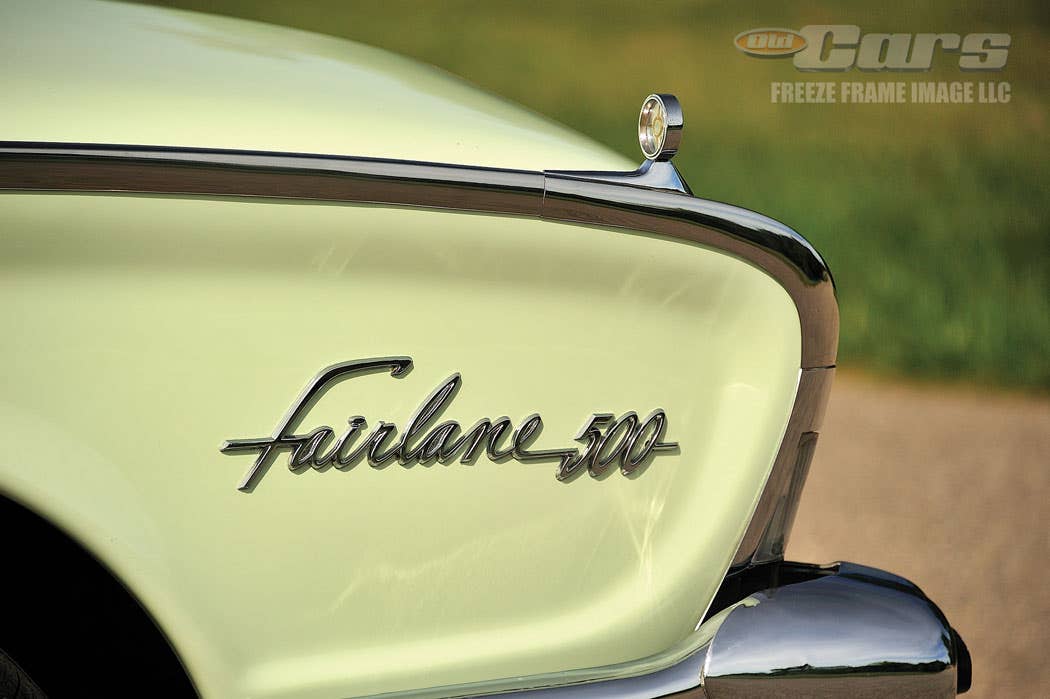
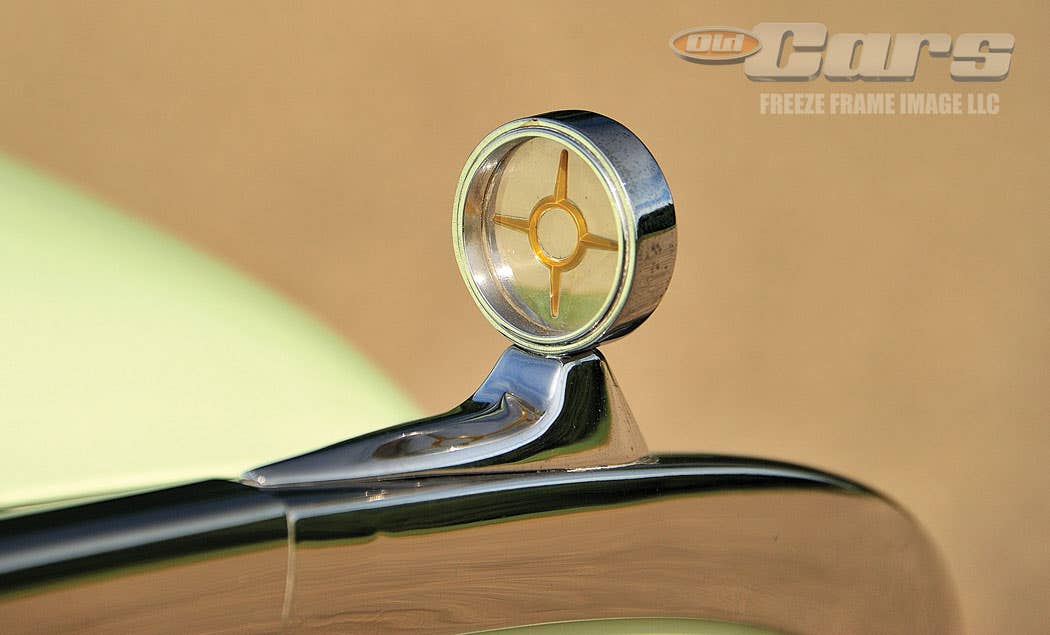
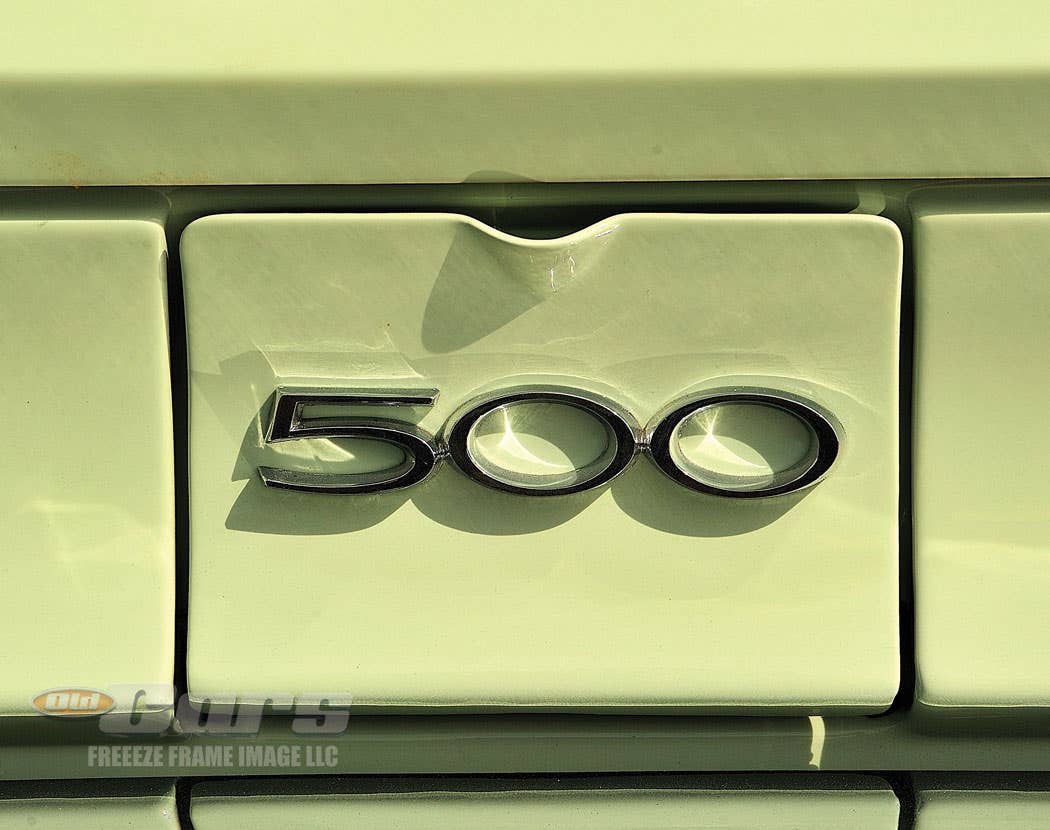
The 1960 Fords at a Glance
Except for the Thunderbird, the full-size Fords were totally redesigned from the ground up for 1960. They shared nothing with the previous models except engines and drivetrains, and used a fresh design closely inspired by the Ford Quicksilver show car. While 1960 Ford styling was considered controversial by many, it remains one of the smoothest designs ever to come from the Dearborn drawing boards. The new models were longer, lower and wider than in 1959, yet when compared to some of their contemporaries, were stylistically restrained.
All three model lines of the full-size 1960 Ford were introduced to the public on Oct. 8, 1959. They included the base Fairlane series, the mid-tier Fairlane 500 series and the top-line Galaxie and Galaxie Special series, the latter including the Starliner two-door hardtop and Sunliner convertible. In addition, Ford launched its new compact Falcon for 1960, giving Ford a nearly clean slate at the start of the new decade.
Full-size Ford fenders were trimmed by a thin chrome strip that started above the front bumper, swept upward to the top edge of the front fender, then ran rearward along the horizontal beltline to the back of the car where it turned inward and capped the sharp horizontal tailfin. Large, semi-circular taillamps were housed in a concave panel below the tailfins and directly above a large chrome bumper. At the front end, a large, recessed mesh grille housed dual headlamps.
The Fairlane series contained the word “Ford” spaced along the recessed section of the full-width hood and no other additional side trim — not even a “Fairlane” identifying script.
The Fairlane 500 was the intermediate trim level and included all the Fairlane trim plus a “Fairlane 500” script on the side of each front fender. There were also five “delta wing” chromed strips on each rear fender. The Fairlane 500 was only offered as a two- or four-door sedan, which Ford called the Club Sedan and Town Sedan, respectively.
Only the Fairlane 500 and top-line Galaxie/Galaxie Special series used a Ford crest on the recessed center of the full-width hood. On both Galaxie models, a single chrome strip began near the center of the front door and continued on the side rearward toward the taillamps. A ribbed aluminum stone shield was behind the rear wheel opening.
Also worth noting is that Ford produced about 900 full-size Custom 300 models to fleets for use as taxi and police cars. This bare-bones model did not appear in the consumer brochure for civilians.
Although Ford did not provide production breakouts by engine type, trade publications recorded that 67.5 percent of all Fords (excluding Thunderbirds and Falcons) had V-8 engines installed. All Falcons were sixes and all Thunderbirds were V-8 powered. Automatic transmissions were installed in 67.1 percent of all Fords, 44.5 percent of all Falcons and 97.9 percent of all Thunderbirds built during the model run. Ford’s share of the overall automobile market dropped to 22.55 percent this year, compared to 27.33 percent in 1959. Model-year production peaked at 911,034 Fords, 435,676 Falcons and 92,843 Thunderbirds. Production of full-size 1960 Fords, by model, was as follows: 900 Custom 300 models; 204,700 Fairlane models; 244,300 Fairlane 500 models; 289,200 Galaxie models; and 171,800 station wagons. Just 297,400 of these full-size Fords were six-cylinder-powered for the 1960 model year.
The full-size 1960 Ford was a substantial automobile, measuring 213.7 inches in overall length on a wheelbase of 119 inches. Some states limited the width of a vehicle without side marker lamps to 80 inches, and the ’60 Ford was 81-1/2 inches wide. Since the Ford lacked side markers, it was technically illegal, but Ford obtained a waiver and narrowed its cars to 80 inches for 1961. The weight of a six-cylinder Fairlane 500 Town Sedan was recorded as 3,609 lbs.
Ford built 153,234 Fairlane 500 Town Sedans with six-cylinders and V-8s in 1960. The base price of the V-8-powered Fairlane 500 Town Sedan was $2,501, while the six-cylinder Fairlane 500 Town Sedan was base-priced at $2,388.
Ford options included: Polar Air conditioning, including tinted glass and V-8 ($271). Select Air air conditioning, including tinted glass and V-8 ($404). Backup lamps ($11). Heavy-duty 70-amp battery ($8). Equa-Lock differential ($39). Electric clock ($15). Fresh Air heater/defroster ($75). Recirculating heater/defroster ($47). Four-way manual seat ($11). Rocker panel molding ($14). Padded dash and visors ($25). Two-tone paint ($19). Power brakes ($43). Power seat ($64). Power steering ($77). Front and rear power windows ($102). Push-button radio and antenna ($59). Front seat belts ($21). Tinted glass ($43). Cruise-O-Matic ($211). Ford-O-Matic with six-cylinder ($180). Ford-O-Matic with V-8 ($190). Overdrive ($108). Wheel covers ($17). Windshield washer ($14). Two-speed windshield wipers ($10). Ford offered numerous tire options, such as white sidewall and oversized models.
The smallest Ford V-8 for 1960 displaced 292 cubic engines, had 185 hp and added $113 to the base price. A two-barrel 235-hp V-8 displacing 352 cubic inches was
$147.80, and a four-barrel, 300-hp 352 added $177.40. Ford also offered a high-performance 360-hp version of the 352, but its additional cost is not available.
SHOW US YOUR WHEELS!
If you’ve got an old car you love, we want to hear about it. Email us at oldcars@aimmedia.com
If you like stories like these and other classic car features, check out Old Cars magazine. CLICK HERE to subscribe.
Want a taste of Old Cars magazine first? Sign up for our weekly e-newsletter and get a FREE complimentary digital issue download of our print magazine.








